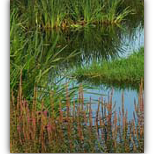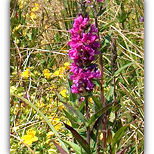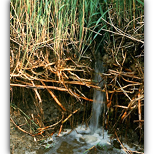Hygienisation
Hygienisation of wastewater has become a central role of wastewater treatment, since nutrient removal has been mastered in most treatment plants. Especially areas where treated wastewater is released into natural bathing areas, the pathogen removal is of high importance.Instead of the costly methods of precipitation and filtration, constructed wetlands are an effective alternative. The natural pathogen removal process is mainly achieved by adsorption and breakdown by protozoa and other organisms.
Very effective natural hygienisation has lately been achieved by vertical constructed wetlands with sand as substrate and a height of 1m.
Water is the source of all life. We need it
to drink, to prepare food, for washing and cleaning, but also
for industrial and food production. Water is, in short,
irreplaceable. Yet clean water is becoming an increasingly
rare resource in many parts of the world.
The largest consumer of water is agriculture. Around 70 % of
the water used by humans – in some developing countries as
high as 90 % - is used for irrigation, with fatal consequences
in some cases. Faced with a lack of alternatives, farmers
often use waste water for irrigation, which leads to health
risks, in particular diarrhoea.
In the course of laboratory research and tests under practical
conditions carried out over several years in collaboration
with partners from science and industry, UFZ scientists have
succeeded in demonstrating that waste water can be made
hygienic for irrigation purposes using simple
technology. This means that it is possible to reap the
benefits of waste water recycling whilst meeting hygiene
requirements.
After a general introduction, the following sequences provide
(with text, but no sound) about various aspects of constructed
wetlands: What effect do wetland hydraulics have on removal
efficiencies? What is the difference between horizontal and
vertical flow filters? What type of plant is suitable for
treating waste water and what fundamental soil processes do
constructed wetlands use to purify waste water?
Production:
CAST creativ-fernseh GmbH & Co. KG, Dresden
Produced: 2005
Conceptual design and editorial work:
Dr. Oliver Bederski | Umwelt- und Biotechnologisches Zentrum,
UFZ
Dr. Peter Kuschk | Department Bioremediation, UFZ
Doris Böhme und Andreas Staak | Public Relations, UFZ
For more information click here.







